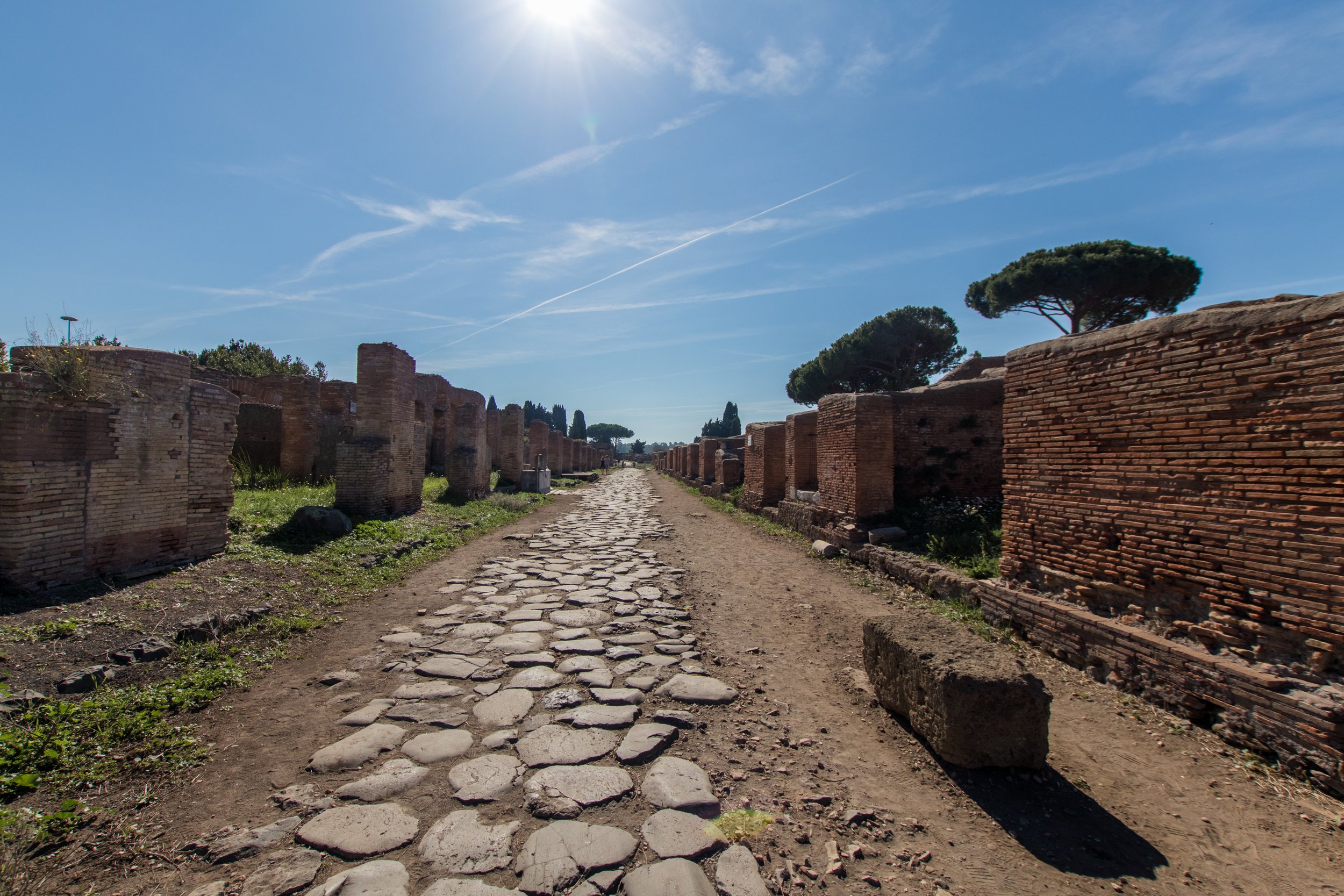EARTHMOVING IN CONSTRUCTION: WHERE AND HOW IT ALL BEGAN
The Egyptian pyramids, the Great Wall of China, and great Roman roads were all built in ancient times. Today, it’s nearly impossible for us to consider moving dirt and stones without the use of heavy equipment. Let’s explore the great Roman roads in a bit more detail to better understand what it took for those roads to be built back in the day.
THE LONG AND STRAIGHT ROAD
Ancient Road in Rome
The Romans were known for building perfectly straight roads and were able to do so without the modern surveying tools or machinery used today. The use of tools like the magnetic compass and the sextant date way back to B.C. times. The magnetic compass was designed on a square slab, which had markings for the cardinal points and the constellations. Its pointing needle was a lodestone spoon-shaped device, with a handle that would always point south. A sextant was rediscovered in the 1730s and is a navigation instrument used for measuring angles, primarily altitudes of celestial bodies.
Despite there being descriptions from ancient Rome of cranes and other heavy equipment, earthmoving construction consisted of manually digging and moving large amounts of dirt and rocks and was extremely labor-intensive. The dirt and stones would have to be dug up and loaded into a carriage by man, which was then pulled by animals. To build roads, land had to be cleared out, and trees had to be cut down. Accomplishing these tasks without heavy machinery was no easy feat, but it impressively got done. Surveyors were sent out to determine the precise direction for connecting two main points.
THE ROAD BUILDING TOOLS OF ANCIENT ROME
Groma
In ancient Rome, earthmoving construction required a variety of tools. A device known as a groma, a surveying instrument, was used by the Romans to build roads. It was made up of a vertical staff with horizontal cross-pieces mounted at right angles on a bracket. Each cross piece had a plumb line hanging vertically at each end. This technique was used to survey straight lines and right angles. Another ancient surveying tool that was used for the construction of ancient aqueducts is called the dioptra. The dioptra is similar to the groma but is more accurate and led to more advanced forms of measurement. Roads had to be leveled manually, and soil would be moved around to fill in any low places. Large stones would be packed as tightly as possible into the earth’s base. All of this had to be done before the gravel could be laid on top. If the road had to go over a mountain, so be it. It was expected that those wanting to get to the other side would handle the steep climb up and over.
FAST FORWARD – INNOVATIONS THAT PAVED THE WAY
The development of steam power in the late 1600s made a significant impact on the earthmoving construction. As a result of it, the steam roller was later invented. A steam roller is a type of a road roller used for leveling surfaces. This invention made true earthmoving machines a reality. The inventions of the combine harvester, steam engine tractor, and gas-powered tractor in the late 1800s would pave the way for heavy equipment into the 1900s. The agricultural, mining, and construction industries benefited from the numerous heavy equipment machinery that was invented in the 1900s. The construction of interstate highways in the 1950s could not have been completed, were it not for the heavy machinery.
Contact us to learn more about how we can help you win, plan and execute more earthmoving projects that will save you time, resources and money.


